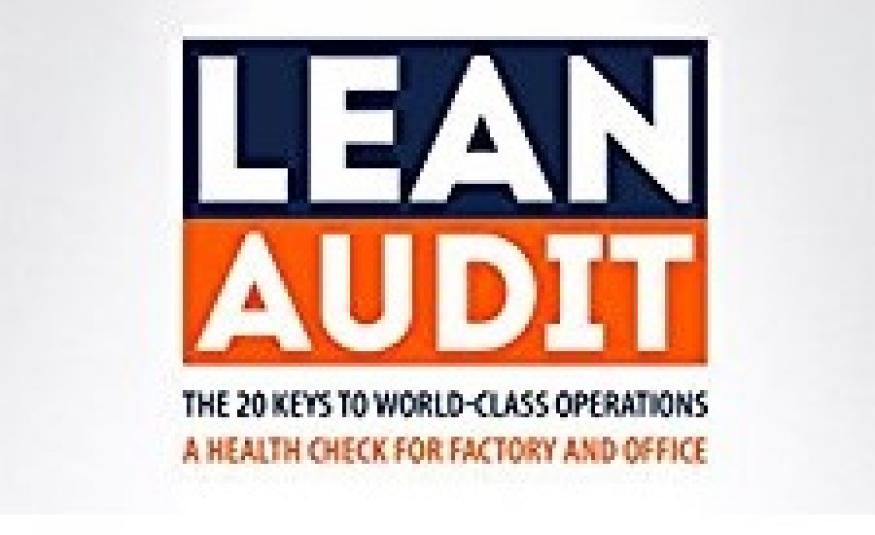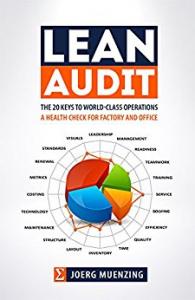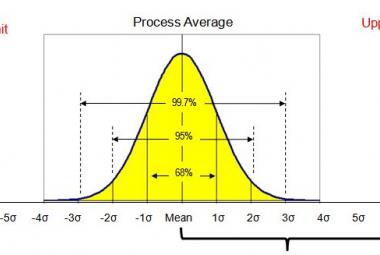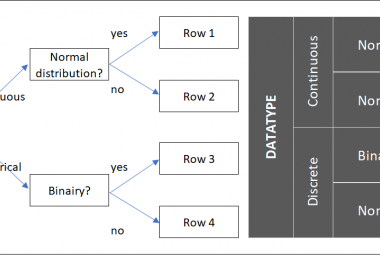In his book Lean Audit, Joerg Muenzing describes how an effective Lean Audit can help assess the maturity of a lean culture, and give direction for improvement. The book contains five parts. Part 1 presents the concept of the Lean Audit, part 2 explains the 20 keys to world-class operations, part 3 guides the readers through the assessment process, part 4 shows to interpret results, and part 5 explains the certification process.
This article will focus mainly on part 3 and 4 of the book: how to measure performance on different keys and what operational excellence looks like, and how to interpret the results to define an improvement plan.
Part one describes THE CONCEPT that is used in the lean audit. Three different audits will be described in the latter parts: one for the enterprise, one for the factory and one for the office processes. The audit includes 20 elements, the 20 keys that together give insight to the level of lean maturity an organization has. Each key has between four and eight statements, of which the answers describe 5 possibilities, level 1 to 5. The results of the audit can best be visualized in one radar chart.
Part two describes the 20 keys in more detail and part three the questions used to assess each of them. Both parts are very detailed and paint a good picture on WHAT A MATURE ORGANIZATION LOOKS LIKE.
One example is Leadership. Without good leadership, different types of waste can emerge, for instance strategic waste that occurs when short term company gains are favored over customer needs. A second type of waste is focus waste, which occurs when priorities lack or are unclear. Finally, when there is a long term plan, but the execution of that plan fails, there is execution waste. Leaders need to help all teams in the organization by providing a vision and clear objectives, they should spend 90% of the time on the future success of the company, and should look at least 5 years ahead.
A second key discussed in the book is Metrics. To develop effective metrics, Muenzing describes ten criteria: they should be actionable, relevant, proximate, accurate, proportional, responsive, causal, simple, meaningful and valuable. These criteria help defining metrics that help the team improve performance, in the direction that is shown by the leadership. To assess the metrics of the organization, a mature organization has a fully deployed balances scorecard which is linked to strategy and reward system, the data that is collected by teams should lead to decision making, tracked in short intervals, and lead to action at deviations, e.g. greater than 5% that the target value.
A third key is how the company values Time. Lean is about time management, and without proper time standards and discipline, our most valuable resource is wasted. Time management systems should be simple. Using complex systems to try to manage time usually does not lead to an improvement of efficiency, because the gains in time are usually needed to keep the systems up to date. Muenzing describes the four rules for effective time planning: everything that gets in the way of achieving goals is waste (1), an understanding of the work is needed to be able to estimate how long a task takes (2), the larger the relative workload of a team, the more important delegating becomes (3) and the list of tasks to do should be ranked based on important, not urgency (4).
You can recognize mature organizations by the way they are able to manage their time. All departments show a high discipline in time management, schedules are closely tracked and hardly deviate, plans are based on standard operating procedures and the standards are balanced according to takt time.
Part four describes the SEVEN STEPS OF THE GOAL SETTING PROCESS after the audit.
Step one is assessing the maturity of the organization. What does the radar chart tell you? Though Muenzing does use the average score to calculate the final score, it is important to realize that the lowest scores (of a critical dimension) influence the performance of the entire chain. When you would like to take this factor into the calculation, the actual maturity score is calculated to take the average score minus one standard deviation.
Step two is calculating balance of the maturity. Since there are 20 keys, each ranked on maturity level one to five, the final chart can show many patterns. There can be big spikes in the chart because of the imbalance between keys. Low scores in combination with imbalance for instance, is a sign of instability and dysfunction. Higher scores with imbalanced keys is expected for specialization companies. The goal should be to have a high score on all the keys, with a balance is between 0 and 9%.
Step three is identifying opportunities for improvement. The radar chart can now be used to define in what areas the organization wants to improve. A good place to start is to improve the balance of the keys and therefore working on the ones that had the lowest score.
Step four is estimating agility for improvement. Muenzings experience shows, that an improvement of maturity can be realized of about 0.5 points per year, which means it takes two years to mature one level. This should be kept in mind when identifying the next steps of improvement. Factors that influence this 0.5% include the ease in which teams take decisions, the level in which they feel responsible for their working environment, and whether they implement best practices.
Step five is projecting impact of the maturity growth. The one metric that is influenced by all others is productivity. A year on year improvement of 6% is definitely possible, though different sites that used the Lean Audit method reached double digit productivity gains.
Step six is about estimating the plateau, the invisible glass ceiling which is difficult to break through. The author describes a trend in which organizations improve following an S-curve, which means that improvement stagnates after one to one and a half years. It is important to recognize when this plateau is reached so that it can be addressed. To break through the plateau, all functions in the complete supply chain must work together to address the entire value stream.
The final step is defining the goal. The goals of maturity can be calculated taking both the current and target maturity into account, and the agility of the organization.
I believe an audit like described in this book is the only way to assess whether or not a cultural change has taken place in an organization. The ready to use audits described in this book are a very good place to start. The proposed 20 keys and different questions to assess each of them, the Lean Audit provides a clear picture of the current state of the organization and can help set direction for improvement.
Continue to:
Design for Operational Excellence - K.J.Duggan (summary)
REFERENCE:
Muenzing, J. (2015). Lean Audit - The 20 Keys to World-Class Operations, a Health Check for Factory and Office. Zwitserland: Leanmap. (order this book)












